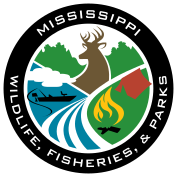
Authored by: Chandler Strickland
Edits by: Pierce Young
What Are Limiting Factors?
Limiting factors are the conditions or resources that restrict the growth, abundance, or distribution of a wildlife population.
As land managers, it’s important to identify what your property may be lacking for the species you’re trying to manage. Understanding the limiting factors on your hunting property is key to enhancing wildlife habitat, improving population health, and creating better hunting opportunities.
Dependent vs. Independent Limiting Factors
Limiting factors can be density-dependent or density-independent:
- Density-dependent factors—such as food, water, cover, predation, disease, or parasites—are influenced by population density. As populations increase, these factors tend to become more restrictive.
- Density-independent factors, like weather events or human disturbances, affect populations regardless of their size.
Recognizing which type of limiting factor is at play—and whether it can be mitigated—will help guide effective management decisions for your property.
Examples of Limiting Factors
Habitat and Cover
If your property (and the surrounding landscape) lacks early successional habitat—such as bedding cover, nesting and brood-rearing areas, or natural browse—wildlife populations may struggle. Practices like timber thinning, prescribed fire, and strip disking can promote early successional growth and improve available habitat. However, if these resources are already sufficient, additional disturbance may not provide further benefit.
Food Resources
Available food—both in quantity and quality—can be a major limiting factor, especially during critical times of the year. Planting diverse, year-round forages or using prescribed fire to stimulate native browse can improve food availability. Still, even well-managed food plots won’t fix the limiting factor if nutrition gaps remain during certain seasons (for example, if only fall plots are planted with no spring or summer forage).
Population Pressure
Even with abundant food and cover, wildlife populations can exceed what the land can support. If population size surpasses the carrying capacity, growth will stagnate or decline regardless of added inputs. In this case, the limiting factor is population management itself.
Why It Matters
Focusing management efforts on the true limiting factors of your property is the most effective way to see meaningful results and achieve your wildlife goals.
To better understand what your limiting factors might be, visit our website and request a free site visit from one of our Private Lands Biologists: